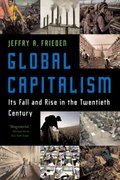Question
using the aggregate demand and aggregate supply (AD/AS) framework and with the aid of a graph, how a trade war with the US will impact
using the aggregate demand and aggregate supply (AD/AS) framework and with the aid of a graph, how a trade war with the US will impact on China's explain how the middle class can come to the rescue of China's economy with the use of an aggregate demand and supply diagram. what are the reasons why the middle class may not spend more money in the economy
using the information below
China's middle class is something of a mythical entity, with wide-ranging estimates of its size and economic power. Optimists believe a large and growing middle class has the ability to lift China and even the world to a more prosperous level, while pessimists foresee an increasingly burdened group that could cause the economy to stagnate and even lead to political chaos.
Beijing wants the middle class to come to the rescue of China's economy. But rising costs, mounting household debt, worries about their future income as the economy slows and doubts over whether the government can adequately provide for the ageing population have made consumers cautious. In many cases, they are doing the opposite of what the government wants and pulling back from spending. Whether this so-called consumption downgrade is broad-based - and a threat to Beijing's economic plans - or not is a matter of intense debate in Chinese policymaking circles. But it is clear that many in China's middle class are struggling to make ends meet.
China is now betting that its middle classthe largest in the world with more than 400 million consumers, according to the authorities' estimatewill increase their discretionary spending on products and services and help stabilise the economy amid the trade war with the United States. The National Development and Reform Commission, the government's powerful planning agency, last month announced that it had organised a special forum to study increasing salaries for lower-middle, middle- and upper-middle income groups, whose average annual individual disposable earnings range from 13,843 yuan to 34,547 yuan.
(Wang 2018)
Step by Step Solution
There are 3 Steps involved in it
Step: 1

Get Instant Access to Expert-Tailored Solutions
See step-by-step solutions with expert insights and AI powered tools for academic success
Step: 2

Step: 3

Ace Your Homework with AI
Get the answers you need in no time with our AI-driven, step-by-step assistance
Get Started


